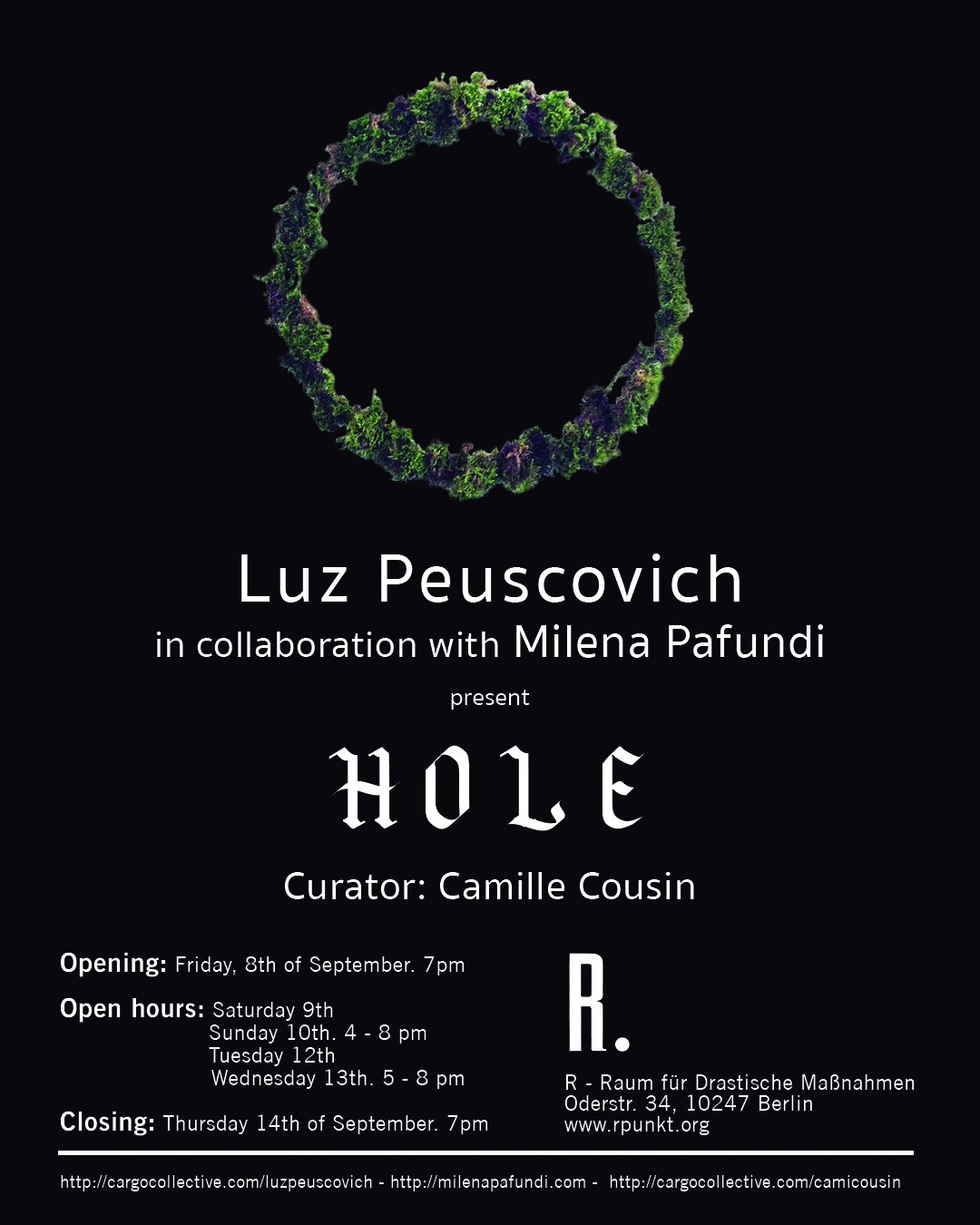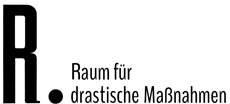
Luz Peuscovich is an explorer. During her multiple trips around the world, she collects natural elements becoming the physical and symbolic medium of her installations.
Hole reflects upon the different forms that nature adopts and the way we humans have categorized and valued it and by extension everything around us, including our own human condition, our bodies and their practices.
It all began as a game between the artists where they would talk about and find new names for the natural objects referring to sexual organs which Luz found during her travels.
Why are certain parts of the body sexualized and not others? This question arose when reading the text „The Contrasexual Manifest“ by B. Preciado.
The game turned into conversations to deconstruct and redefine the ideas of nature, body, uses of the body.
After reading Preciado, the question ‘what is natural?’ becomes erroneous. There is nothing natural (pure, prior to the human), the categorization of nature and precisely of the sexual nature is merely a social construction legitimating some bodies’ subjection to others.
“Sex, as organ and practice, is neither a precise biological place, nor a natural impulse. Sex is a technology of heterosocial domination that reduces the body to erogenous zones according to an asymmetrical distribution of power between the genders (feminine/masculine), matching certain effects with certain organs, and certain sensations with specific anatomical reactions”. (Our translation from Preciado, Beatriz: El Manifiesto Contrasexual. Barcelona, Anagrama, 2011, p.17).
“Sex becomes part of power calculations, so that the discourse on masculinity and femininity and the techniques of sexual identities’ normalization are transformed into life modelling and controlling agents”. (Our translation from the Interview of B. Preciado in El Ciudadano, 22d of december 2009).
During the collection process arose the question of how what we call organic nature manifests itself. It does so, as a consequence of the elements that combine it and that can have infinite manifestations. It appears as anarchic and diverse. For example, the same species of fungi has infinite shapes and sizes, never a unique one.
So why would the sexual nature have to be one?
Nowadays an inequality based on sex still exists because of the hetero-norm’s hegemony, but is there a hegemony in the organic nature?
What parts of the body could be re-thought, re-constructed, re-named in order to counter that hegemony?
As Preciado points out, “The anus has no sex, no gender. Like the hand, it escapes the rhetoric of sexual difference. The anus defies the logic of masculine or feminine identification. (…) There is no partition of the world in two. Rejecting the sexual difference and the anthropomorphic logic of the face and the genital, the anus (and its opposite end, the mouth) sets the basis for an inalienable sexual equality: every body (human or animal) is first and foremost anus. Neither penis, nor vagina, but an oral-anal tube. In the horizon of the post-human sexual democracy is the anus, as an orgasmic cavity and non-reproductive receptor muscle, shared by all”. (Our translation from Paul B. Preciado, Terror anal in Hocquenghem, G: El deseo homosexual. Spain, Melusina, 2000, pp.186-187).
From that process arises Hole, symbol for a horizontal way of getting linked together, from where something hidden and unknown is available to be explored, renamed and revalued.
The exhibition opens with two works, „Hole“ (sculpture / installation) and the catalog of collections. The third work „V“ (video installation), a collaboration between Luz Peuscovich and Milena Pafundi, will be presented on Thursday September the 14th for the finissage day in the space’s basement.
Curator: Camille Cousin
Luz Peuscovich was born in 1984 in Argentina. She studied Fine Arts at the University of La Plata, Art Curatorship and Management in Buenos Aires and attended a scenography course at the Colón Theater (Buenos Aires). As from 2009, her explorations in painting have been followed by multidisciplinary works and installations, with frequent collaboration with other artists, seeking to expand the perceptual abilities of active viewers.
Her current projects are linked to travel experiences during which she collects objects found in nature with which she realizes installations. By generating a change in the usual context, the artist seeks to transform the perception of space so as to inhabit it in a different way than the usual. Her research focuses on the integration of man within nature and the experience connecting him with beauty.
She exhibited her installations in different art spaces in Argentina, the United States, Germany, Panama, China, India, Brazil and Norway.
Milena Pafundi was born in 1983 in Buenos aires. She is a transdisciplinary artist. As a visual artist Milena develops contents and techniques for audiovisual shows, performance, theatre and dance plays. She produces installations. She founded the Articiclo Collective. She teaches visual arts with gender perspective. As an audiovisual director, she is creative in both artistic and journalistic digital contents focused on Human Rights and Gender Violence. She studied Film direction and took several courses and seminars of videoart, live visual softwares and programming. In 2017, she took part in a Feminist Art residency in Toronto, Canada, after taking part to others residency programs in the Museum of Contemporary Art (2015) and the Cultural Center Matienzo (2016) in Argentina.
